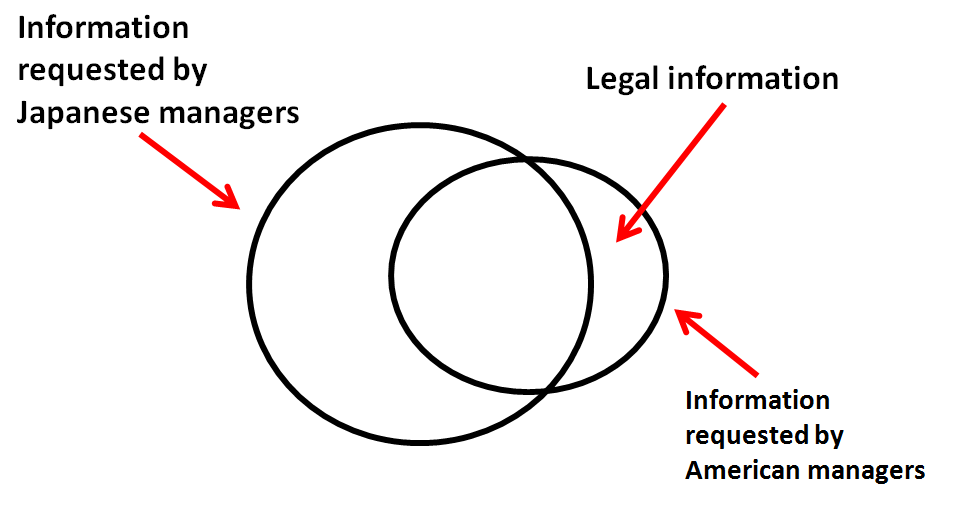Each day, week, month. I discover how much I still have to learn. After a recent workshop I gave on conflict management, to Canadian immigrants, at the Inter-Cultural Association of Greater Victoria, I’ve upped my belief that getting a grip on cultural differences matters a lot. And, it matters whenever, and wherever, you find yourself in a culturally-diverse group.
This week I’ve been working on a different workshop; this one for the Association of Conflict Resolution’s annual conference, taking place next week in New Orleans. My workshop there is focused on conflict resolutions through virtual collaboration and innovation. One idea/concept I’m going to share there, is something I learned with and from ICA, who just happen to be experts on all things, inter-cultural.
Different strokes for different folks
Let’s use information needs as an example. Different cultures need different information and different amounts of information to make decisions. Suppose a Japanese and an American company are deciding whether to collaborate / partner on some work odds are: a manager from Japan working with his American counterpart is going to require significantly more information, about their American counterparts (e.g., their technology and their reputation) than are the American managers about their Japanese counterparts. This does not apply to all areas: American managers usually need significantly more information than their Japanese counterparts when it comes to legal matters (no surprise?!). This Japan/America example can be diagrammed like this:
The above Japan/America example was pulled from this excellent book on intercultural differences in the workplace):
Different cultures. Different needs.
Culture is like an iceberg
Some cultural differences we can see. They are above water; how they dress, their appearance, body language, accent and use of English terms, how they greet us, their writing style, how their organization is structured, what their buildings and office layout are like, etc.
Other cultural differences are hidden. They are out of view, below water; building rapport, persuasion, accomplishment, self-promotion, emotional engagement, concept and use of time, relationships between men and women, manager/employee relations, teamwork/individualism, risk tolerance, etc.
Each of these areas equates with a continuum of difference, between us and them.
Getting to know you
Now, in a virtual multi-culture team environment, understanding the other’s culture is often more difficult, than face-to-face. Observable cultural clues are often minimized, or barely exist at all!
So, what to do, to get to know you, you, who are so different than me?
Two suggestions: 1) think about how they are different, and 2) actually spend time with them, and see and appreciate the world from their shoes.
How about you? How will you get to know them, address the cultural gumbo, work better collaboratively, and get it done?
—–
Photo credit: foodmayhem.com on flickr


Speak Your Mind